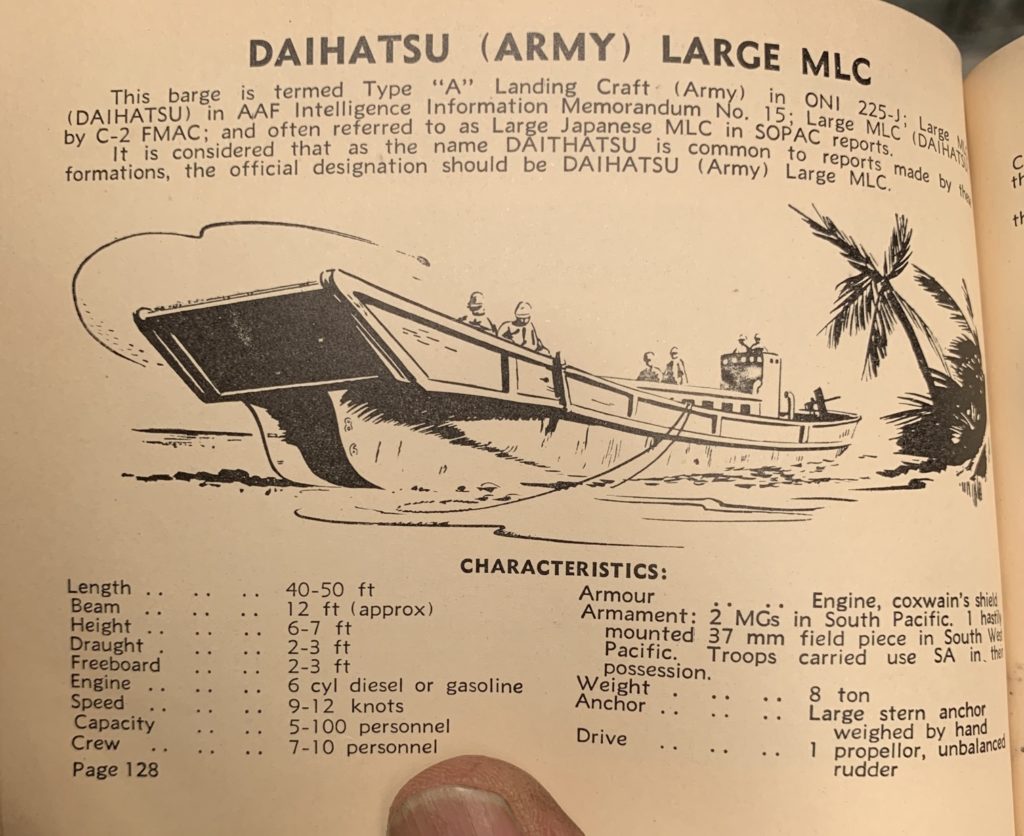
–
Zo809. Daihatsu (Army) Large MLC, it is also termed Type “A” Landing Craft (Army).
—————————————————-
In this presentation we show two images from Wikipedia and 6 images from John Duresky, who is a member of the Army Lt. Chester K. Britt Research Team.
He wrote this to me:
Hello Karl.
Incidentally, I was at a military memorabilia store in Globe AZ a month ago. Proprietor had a WWII Japanese weapon ID pamphlet printed I believe in Australia. Was a bit out of my budget (but should have bought it anyway). I’d read numerous reports of Japanese barges and in the pamphlet were the attached photos which he was kind enough to let me photograph. If a diver does locate a barge wreck of any kind maybe this will help identify the type of barge which was large enough to hold 30 combat troops.
John
——————————————————–
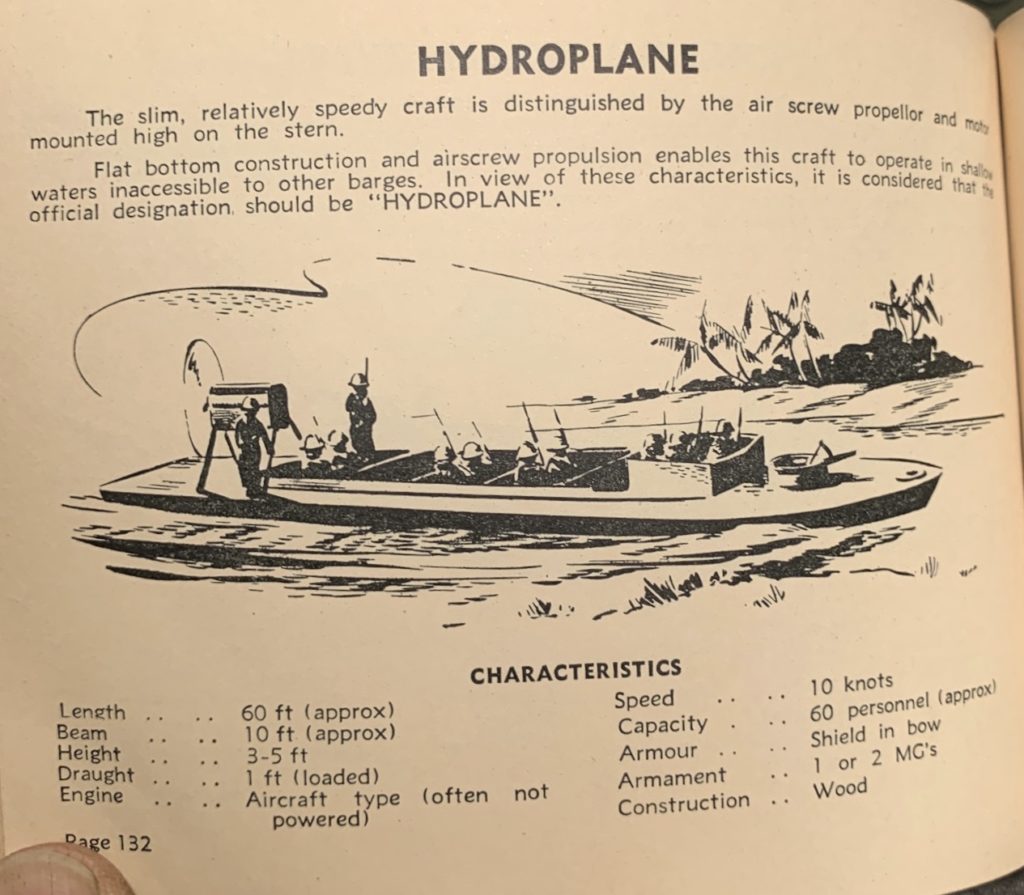
Zo810. This slim, fast Japanese Landing Craft is commonly referred to as the Hydroplane.
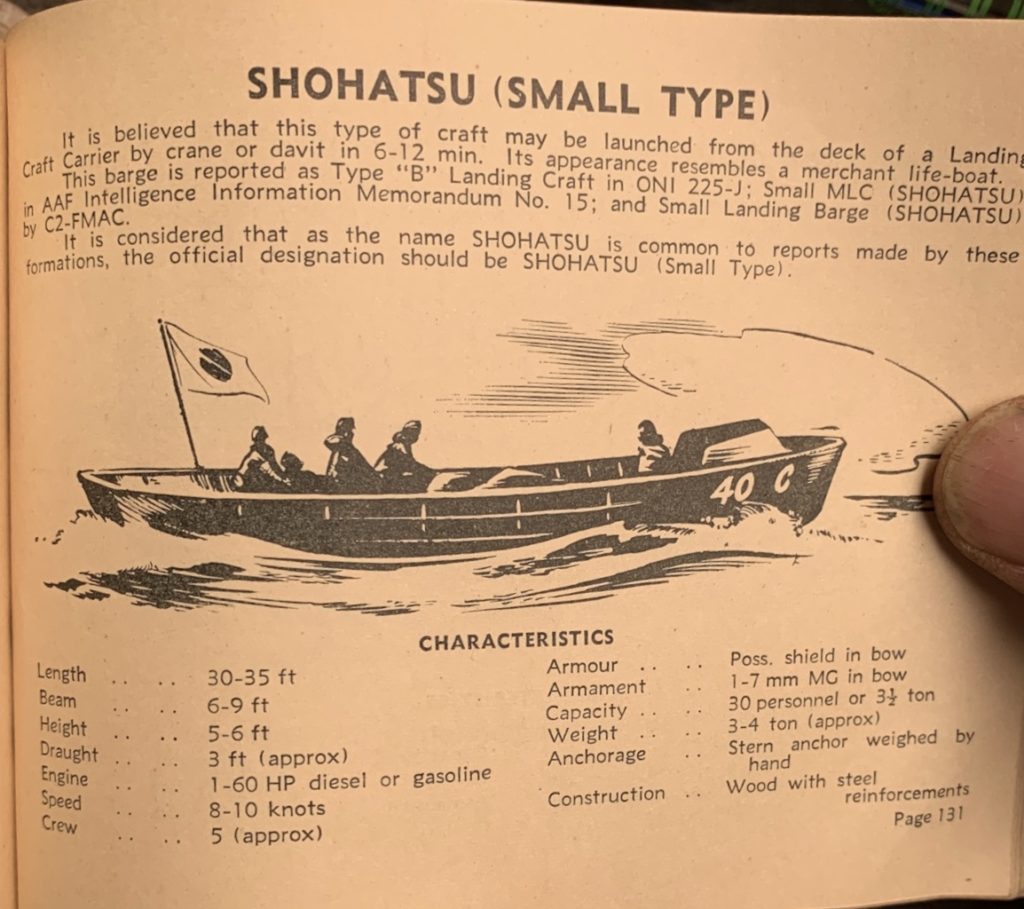
Zo811. Shohatsu (Small Type).
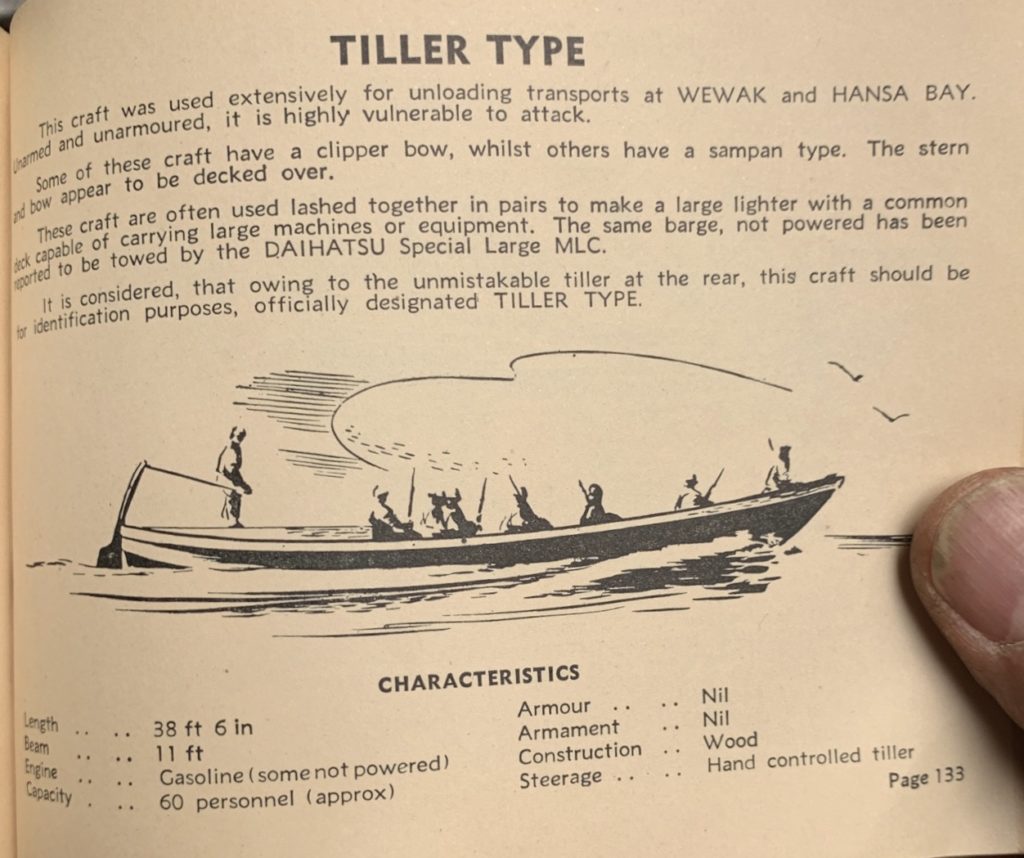
Zo812. Tiller Type, a craft used to offload transports.
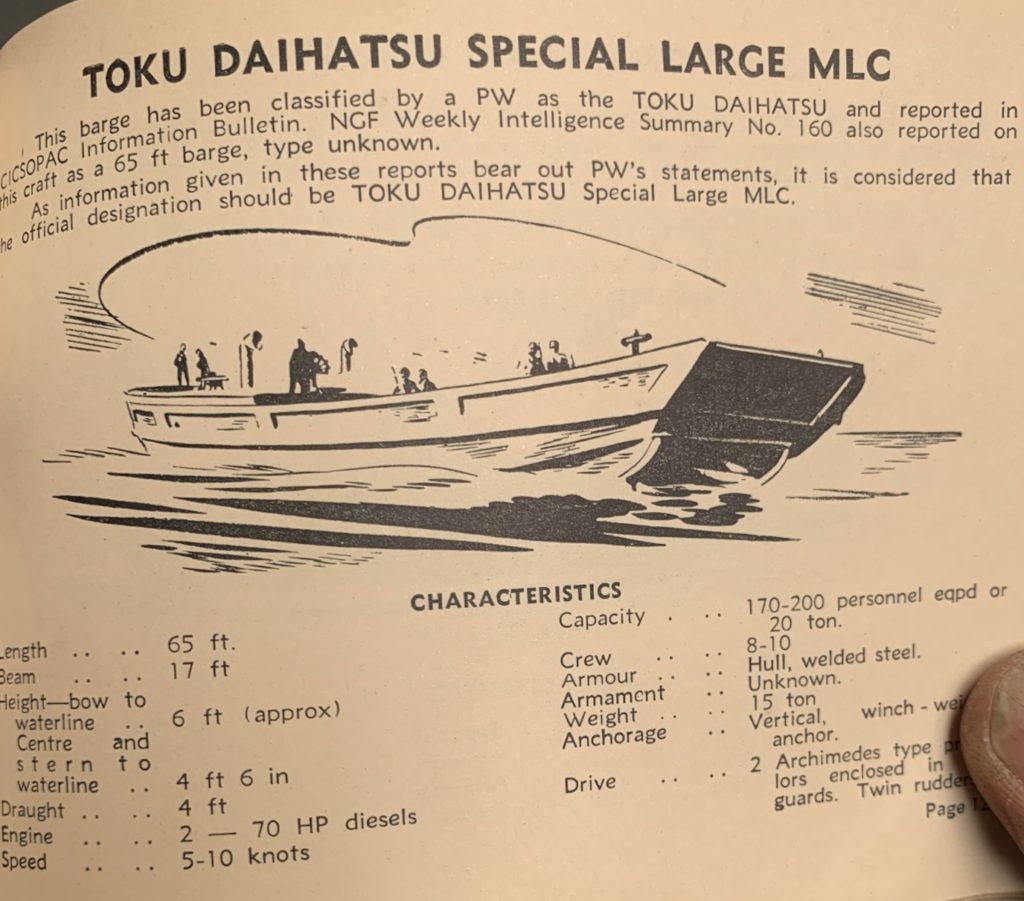
Zo813. Toku Daihatsu Special Large MLC.
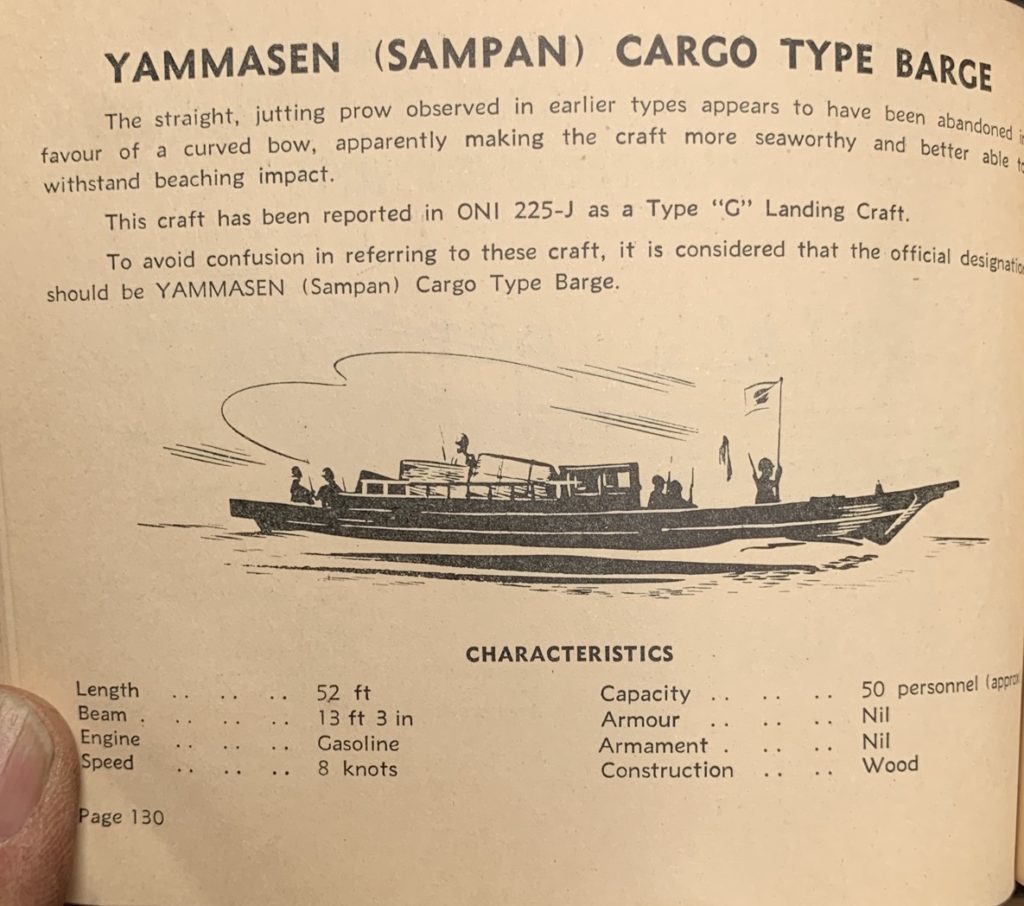
Zo814. Yammasen (Sampan) Cargo Type Barge.
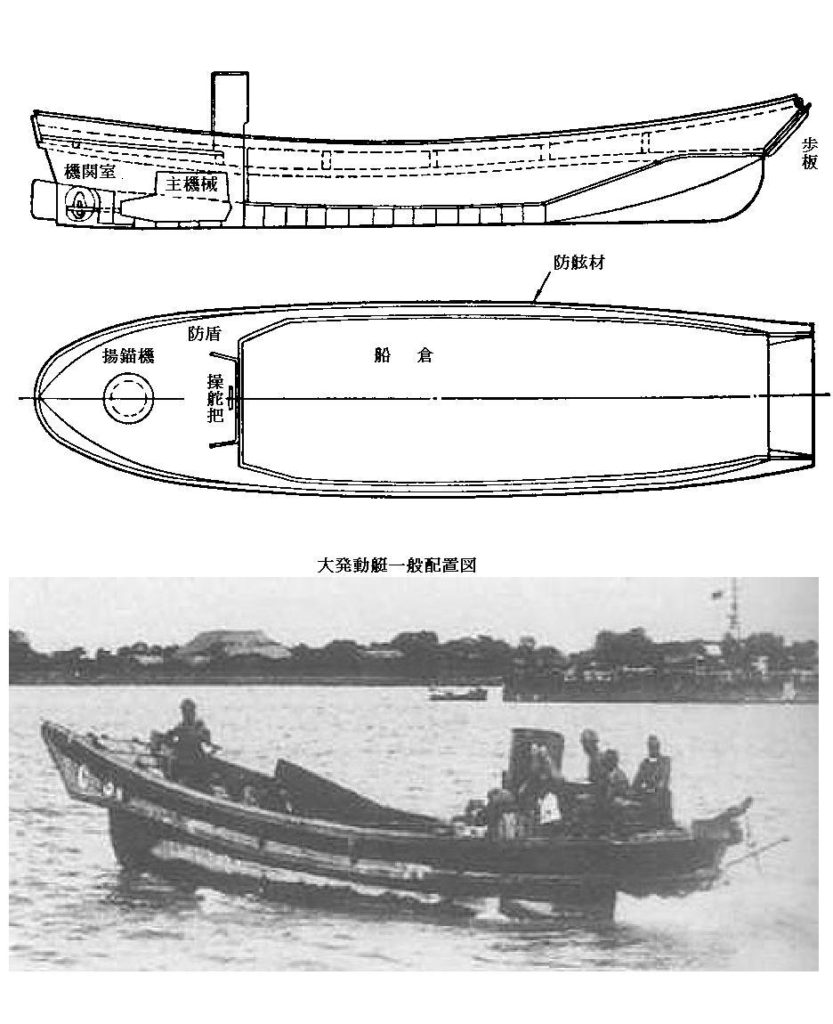
Zo815. Daihatsu-class landing craft, Wikipedia. Here is the URL or click here:
https://en.wikipedia.org/wiki/Daihatsu-class_landing_craft
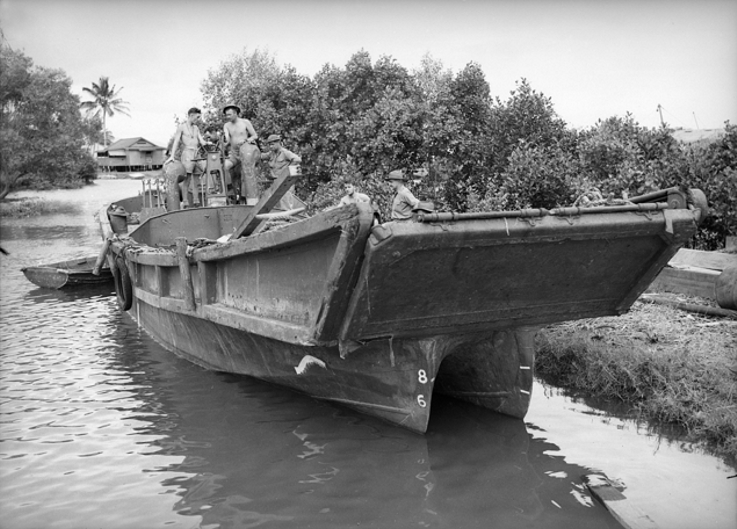
Zo816. One of the Japanese invasion barges used in their abortive landing attempt at Milne Bay, now salvaged and put into use by Australian engineers. Here is the URL or click here:
https://upload.wikimedia.org/wikipedia/commons/0/05/Milne_Bay_026639.jpg
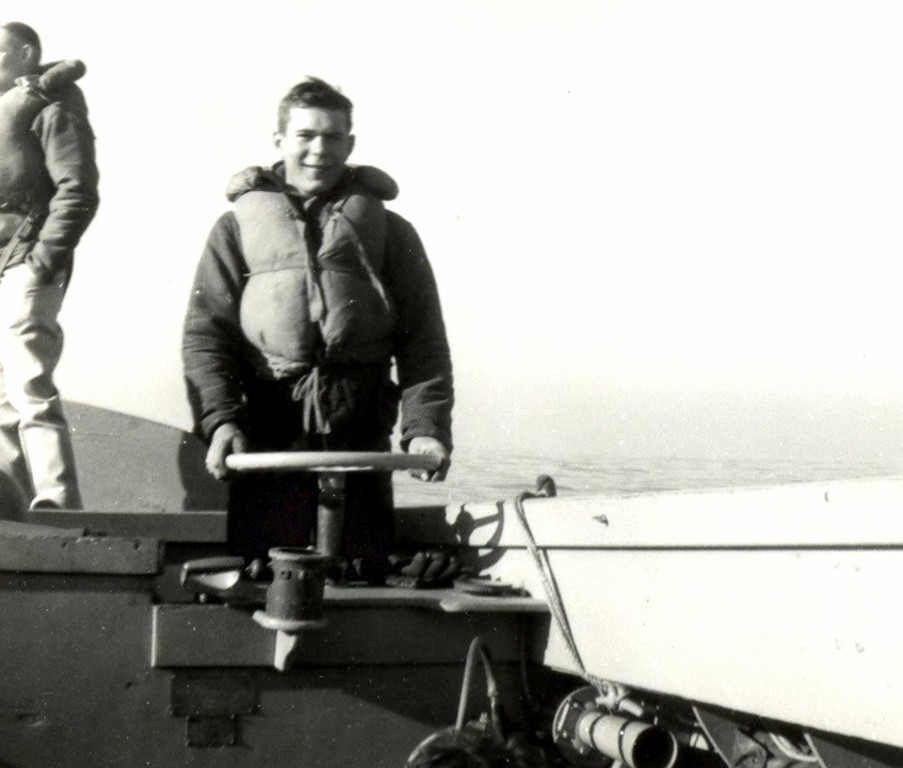
Zo817. Yours truly, Assault Boat Coxswain Karl Welteke, in 1962 on our ship’s (USS Belle Grove LSD-2) only LCVP. When I reported on board in Oct 1960, they sent me to the Assault Boat Coxswain School in San Diego because I wanted to be a Boatswains Mate. I was a Gung Ho Sailor and I’m sure I helped the ship get a good Amphibious Training Mark. He is what I remember about the LCVP: 35 feet long, 35 combat troops, 8 ½ feet wide, 8 tons heavy, 225 HP Gray Marine Diesel Eng.
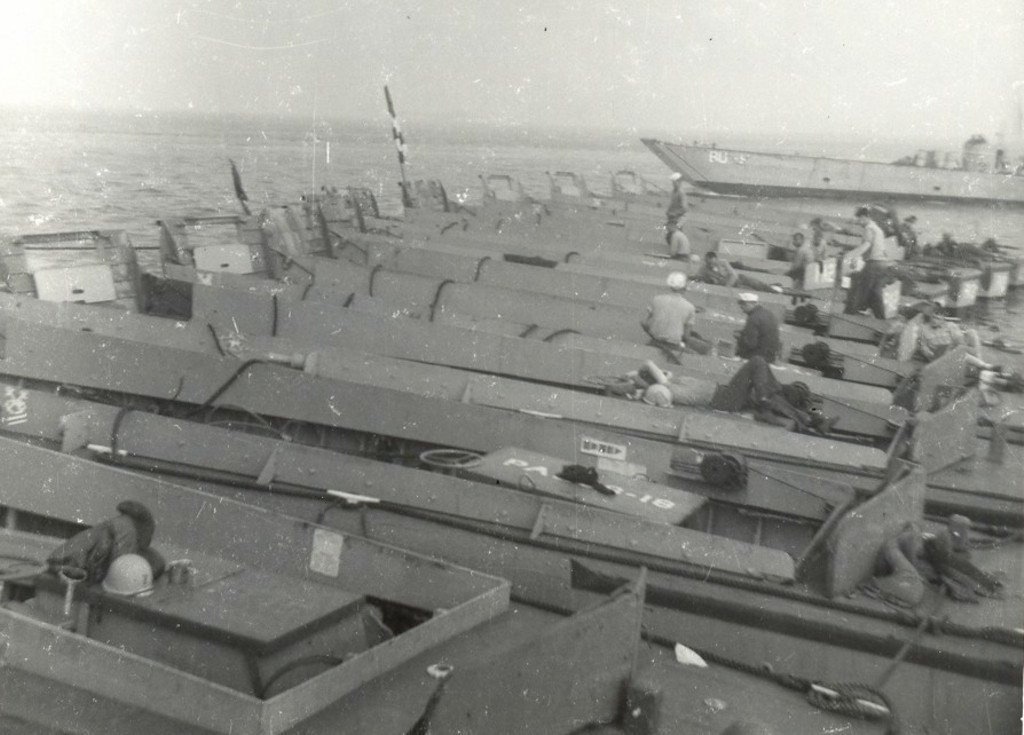
Zo818. A nest of LCVPs (from other ships) secured to our ship’s (LSD-2) Starboard Quarter during one of our amphibious operations in the Far East (WESTPAC) in 1962.